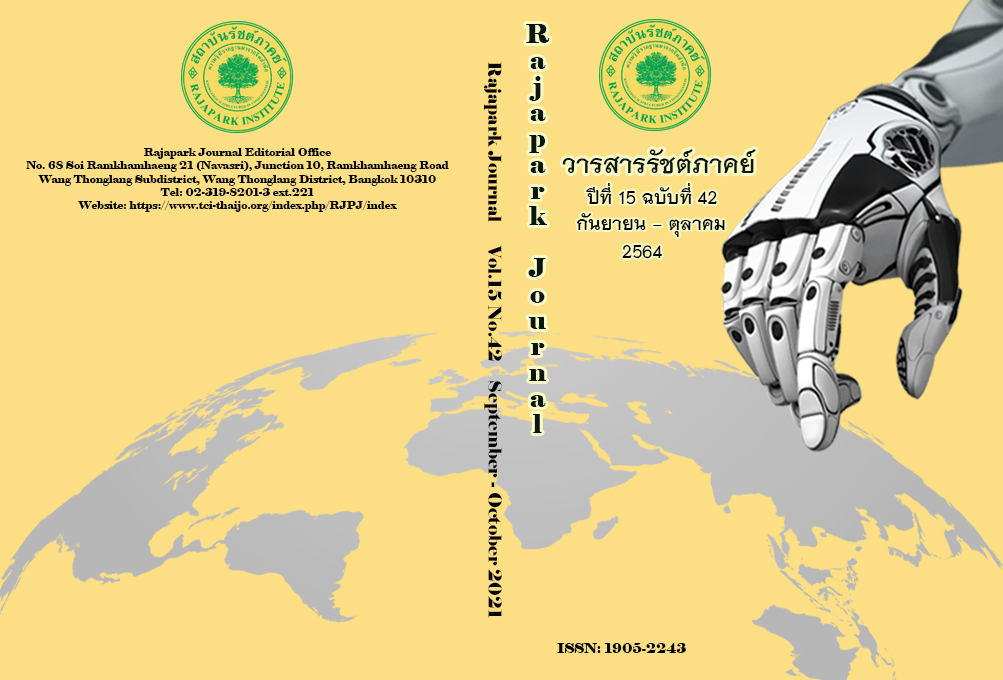Visionary Leadership Development Model for Subject Matter Group Leaders Secondary Education Area Office, Suratthani Chumphon in Suratthani Province
Main Article Content
Abstract
The objectives of this study were: 1) to study the components of visionary leadership for subject matter group leaders in schools; 2) to create the visionary leadership development model; 3) to evaluate the visionary leadership development model. The study was conducted using a mixed methodology, which consisted of three steps as follows. Step 1 was used to analyze the components of visionary leadership. Step 2 was used to develop and test the visionary leadership development model. Step 3 was used to evaluate the visionary leadership development model.
The research findings were as follows: 1. The overall components of visionary leadership for the subject matter group leaders in school were at a high level. When considering each aspect, the components could be ranked in descending order: 1) inspiring and enthusiastic leaders, 2) leaders who are role models for members, and 3) leaders in challenging work. 2. The visionary leadership development model for subject matter group leaders includes 1) inputs, which provide necessary knowledge, 2) skill formation, 3) products, and 4) feedback.3. The evaluation of the visionary leadership development model for the subject matter group leaders showed that accuracy, appropriateness, feasibility, and usefulness were all at a high level.
Article Details
Views and opinions appearing in the Journal it is the responsibility of the author of the article, and does not constitute the view and responsibility of the editorial team.
References
Bennis, W., & Nanus, B. (1985). Leaders: The strategies for taking charge. New York: Harper & Row.
Buachom, N. (2015). A Change Leadership Development Model of School Administrator in the World-Class Standard Secondary School Project. EAU Heritage Journal Social Sciences and Humanity, 5(2), 215-229.
Duangjai, W. (2013). Model of Transformational Leadership Development of Group Leaders in Secondary Schools under The Secondary Education Service Area Office 22 and 23(Doctor of Education, Leadership in Educational Administration). Sakon Nakhon Rajabhat University.
Hongthong, R., & Udomsap, T. (2016). Visionary Leadership in the Context of Leading Change. Journal of Human Society Review, Phetchaburi Rajabhat University, 18(2), 73-88.
Kotter, J. P. (1999). What Leaders Really Do. Boston: Harvard Business School Press. Mickey, B. H. (2000). Instructional Leadership: A Vehicle for one Urban Principal to Effective Pedagogical Restructuring in a Middle School(Doctor of Education). Temple University.
Robbutr, N. (2016). Organizational Learning Behavior of Executives Educational Institutions under the Organization Chonburi Provincial Administration(Master of Educational Administration). Burapha University.
Sinlarat, P. (2010). Creative and Productive Leaders: New Paradigms and New Leaders in Education (2nd ed.). Bangkok: Chulalongkorn University.
Songkhram, N. (2012). The Development of a Blended Teaching and Learning Model with Proactive Learning for Creating Knowledge and Ability to Solve Creative Problems for Students Bachelor's Degree in Public Higher Education Institutions(Research report). Bangkok: Faculty of Education, Chulalongkorn University.
Sutabhaha, O. (2011). A Causal Relationship Model of Organizational Citizenship Behavior of Department Heads in Basic Education Institutions(Doctor of Education, Educational Administration). Kasetsart University.
Yamada, A. T. (2000). Elementary School Principal’s Perceptions of Responsibilities and Competencies for Instructional Leadership(Doctor of Education, Curriculum and Instruction). University of the Pacific.
Yotha, T., Ekpetch, C., & Chatakarn, V. (2015). Development of Instructional Leadership Model of Leaders of Development Heads in Secondary School under the Secondary Education Service Area Office 11. Suratthani Rajabhat Journal, 2(1), 67-84.


